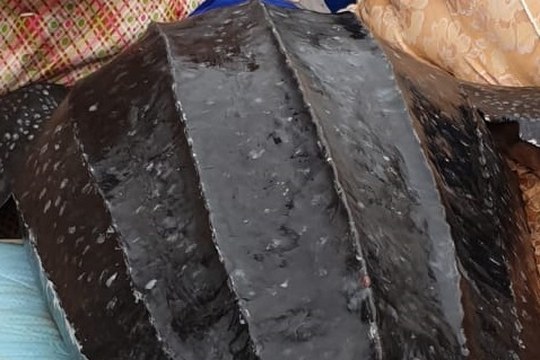- Home
- Master
- Admission Apri sottomenù
- Useful dates
- Teaching team
-
Program
Apri sottomenù
- Calendar
- Biology of large marine vertebrates
- Physiology of large marine vertebrates
- Anatomy of large marine vertebrates
- Statistics
- Monitoring of large marine vertebrates
- Conservation, education, and communication
- Risk and health management of large marine vertebrates under human care
- Pharmacology and Toxicology
- Diseases of large marine vertebrates
- Management of strandings
- International legislation on large marine vertebrates
- Ethology and behaviour of large marine vertebrates
- Welfare of large marine vertebrates
- Pathology of large marine vertebrates
- Seminar on "Scientific writing"
- Internship
- Agenda
- Contacts
- Accomodation Apri sottomenù
- PLACES OF TEACHING
- Field trip to Roatan (Honduras)
- Master final work

Anatomy of large marine vertebrates
Program
4 CFU (48 hours)
Anatomy of Elasmobranchs
Topics of the course will be:
Arguments
Specific contents
External anatomy
External organization and anatomy of elasmobranchs: body shape, fins, head, tail; how can external morphology help us for the taxonomic identification
Evolution
Evolution and classification: placoderms and other ancestors; Cladoselache; Carcharocles; Classification of modern elasmobranchs
Reproductive organs
Male and female reproductive systems. Spermiogenesis and ovogenesis. Uterus and anatomical adaptations for pregnancy
Interaction with the environment
Locomotory system: muscles, skeleton, integument; swimming and floating: the role of the liver
Brain and sensorial system; role of sense organs: case studies in controlled and field conditions; the microbiome of skin and the immune system
Feeding
Feeding: teeth: evolution, morphology and function; the stomach and the spiral valve; how anatomy can help to understand feeding strategies; stable isotopes and trace elements analysis to understand the diet of a shark
Anatomy of sea turtles
Anatomy of marine mammals
Topics of the course will be:
LOCOMOTORY SYSTEM
Osteology: skull, vertebral column, thorax, thoracic limb, pelvic limb.
Arthrology: intervertebral joints, joints of the thoracic and pelvic limbs.
Myology: muscles of the spine and flukes, muscle of the thoracic and pelvic limbs.
RESPIRATORY SYSTEM
Blowhole, upper airways, larynx, trachea, bronchi, lungs: macroscopic and microscopic anatomy.
CIRULATORY SYSTEM
Heart, arterial system, venous system: macroscopic and microscopic anatomy.
LYMPHATIC SYSTEM
Lymphatic vessels, lymph nodes, thymus, spleen: macroscopic and microscopic anatomy.
DIGESTIVE SYSTEM
Mouth (lips, teeth, baleen, tongue), salivary glands, pharynx, esophagus, stomachs, intestine, liver and pancreas: macroscopic and microscopic anatomy.
INTEGUMENTARY SYSTEM
Skin, subcutis (blubber), mammary gland, melon: macroscopic and microscopic anatomy.
URINARY SYSTEM
Kidneys, renal pelvis, ureters, bladder, urethra: macroscopic and microscopic anatomy.
MALE REPRODUCTIVE SYSTEM
Testes, epididymis, ductus deferens, accessory male glands, penis: macroscopic and microscopic anatomy.
FEMALE REPRODUCTIVE SYSTEM
Ovaries, oviducts, uterus, vagina, vestibulum, vulva, clitoris: macroscopic and microscopic anatomy.
ENDOCRINE SYSTEM
Hypophysis, pineal gland, thyroid, parathyroid glands, adrenal glands, endocrine pancreas, diffuse neuroendocrine system: macroscopic and microscopic anatomy.
NERVOUS SYSTEM
Brain, cranial nerves, spinal cord, spinal nerves, autonomic nervous system: macroscopic and microscopic anatomy.
SENSORY SYSTEMS
Olfactory system, eye and visual system, ear and vestibular system, ear and auditory system: macroscopic and microscopic anatomy.